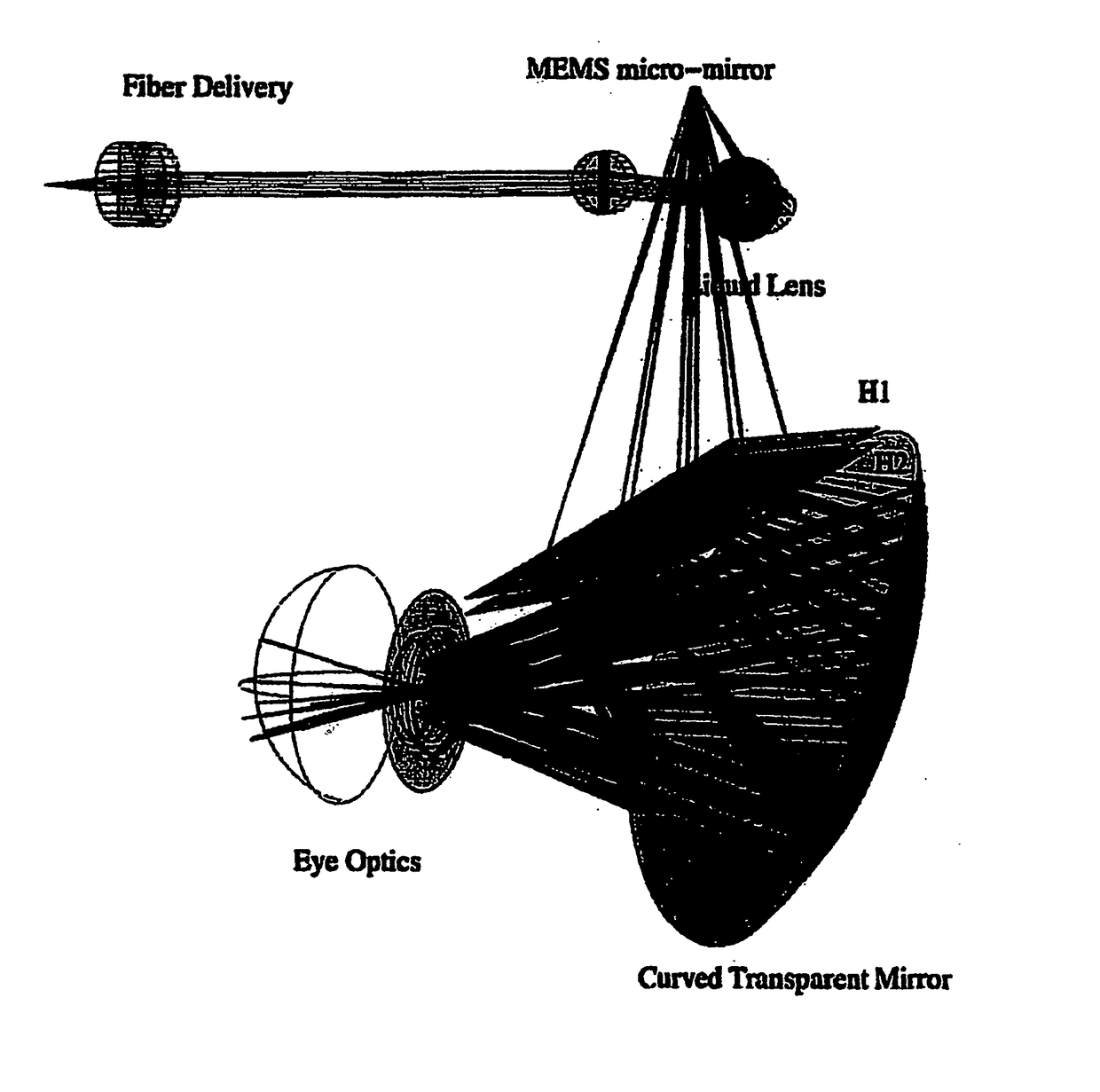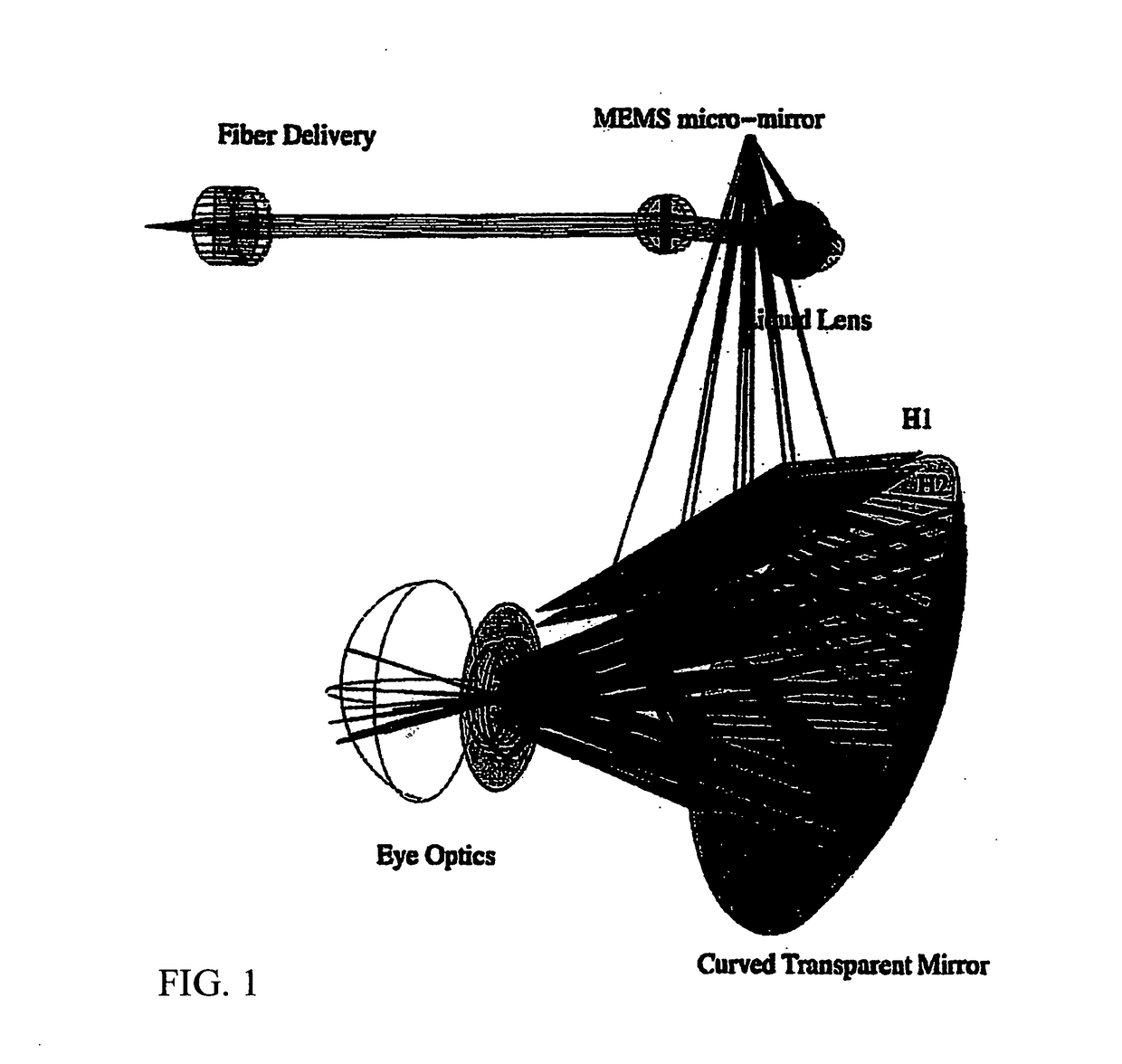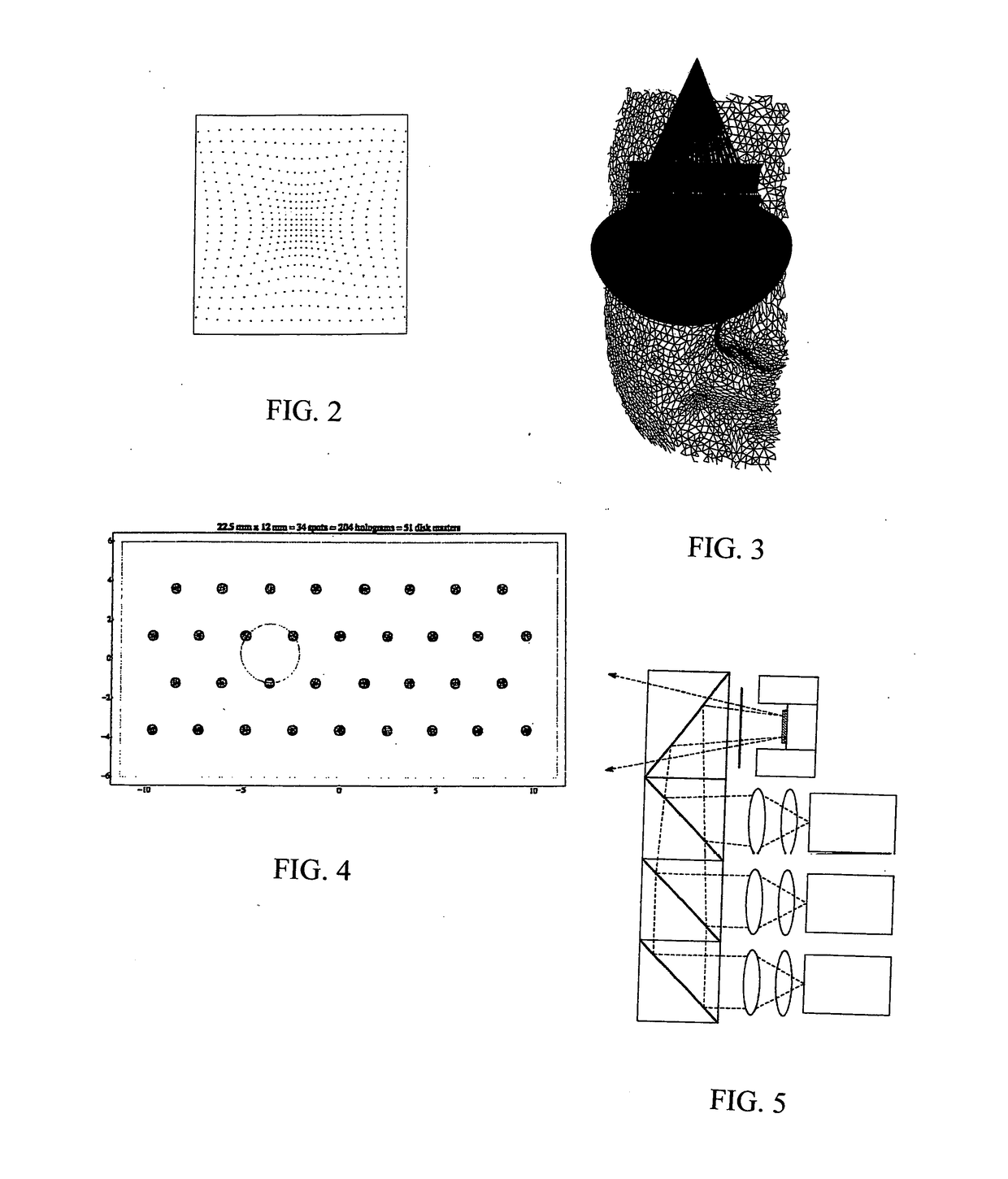Optical See-Through Head Worn Display
a display and optical technology, applied in the field of head worn displays, can solve the problems of significant handicapping the wearer, limited head worn display performance, and difficult design and manufacture, and achieve the effect of high acuity
- Summary
- Abstract
- Description
- Claims
- Application Information
AI Technical Summary
Benefits of technology
Problems solved by technology
Method used
Image
Examples
Embodiment Construction
[0045]Applicant's approach to developing an optical see-through HWD attempts to follow a logical path toward the optimum solution. There are many desirable features in a HWD. The waveguide approach entails numerous, possibly unsurmountable limitations, which prevent attainment of many of the key desirable features. The curved combiner approach appears to allow for a solution for providing all of the desirable features.
Desirable Features in a HWD
[0046]Desirable features in an optical see-through HWD include the following:[0047]First and foremost does not harm natural see-through vision[0048]Provide see-through transmission adequate for all conditions, including nighttime[0049]Does not block peripheral vision (so as not to be hit by a car when crossing the street), does not block binocular overlap (to preserve depth perception) and does not block the view downwards (which would interfere with mobility)[0050]Does not cause a discontinuity to see-through vision (a flat beam splitter in ...
PUM
 Login to View More
Login to View More Abstract
Description
Claims
Application Information
 Login to View More
Login to View More - R&D
- Intellectual Property
- Life Sciences
- Materials
- Tech Scout
- Unparalleled Data Quality
- Higher Quality Content
- 60% Fewer Hallucinations
Browse by: Latest US Patents, China's latest patents, Technical Efficacy Thesaurus, Application Domain, Technology Topic, Popular Technical Reports.
© 2025 PatSnap. All rights reserved.Legal|Privacy policy|Modern Slavery Act Transparency Statement|Sitemap|About US| Contact US: help@patsnap.com



